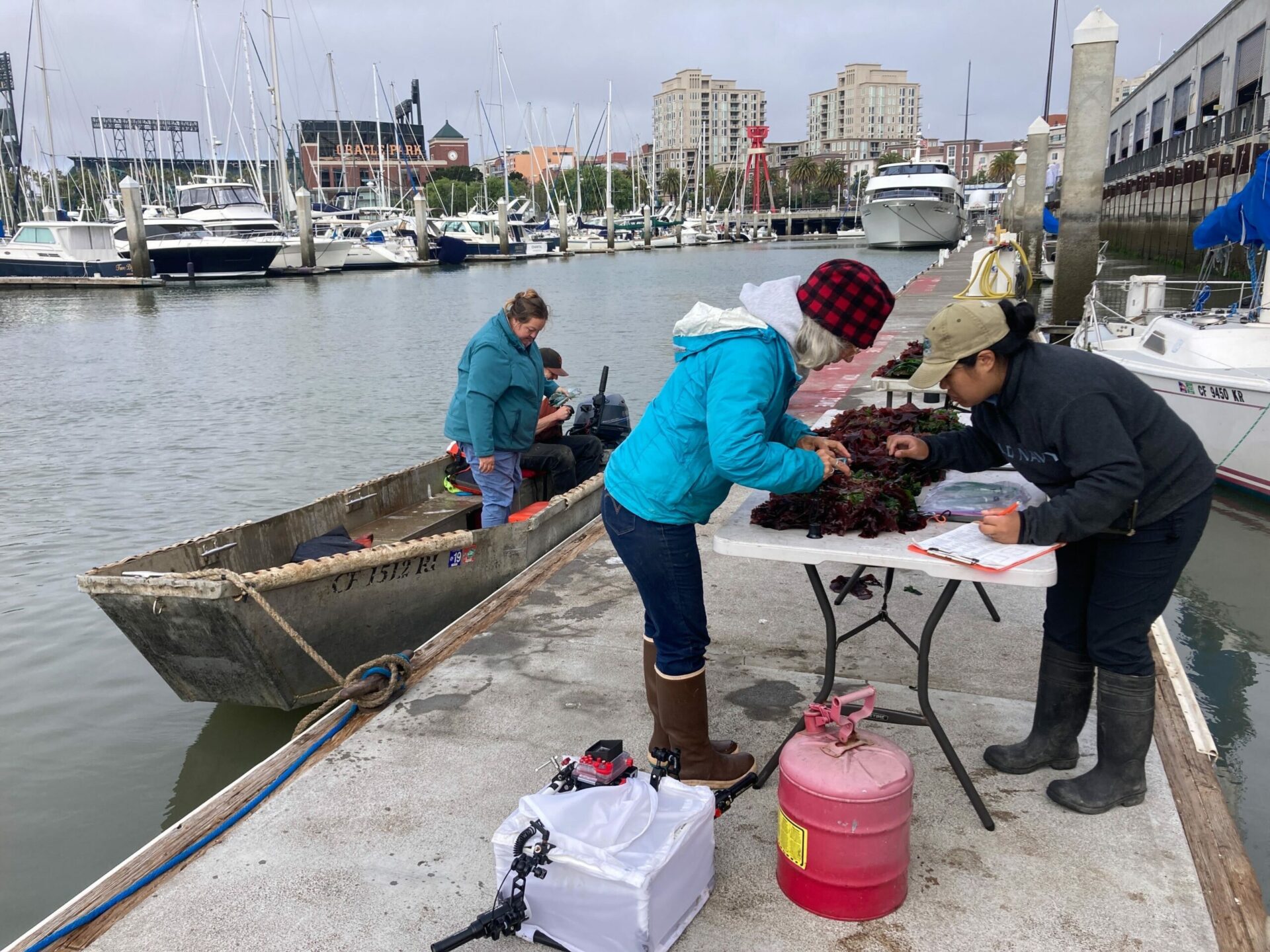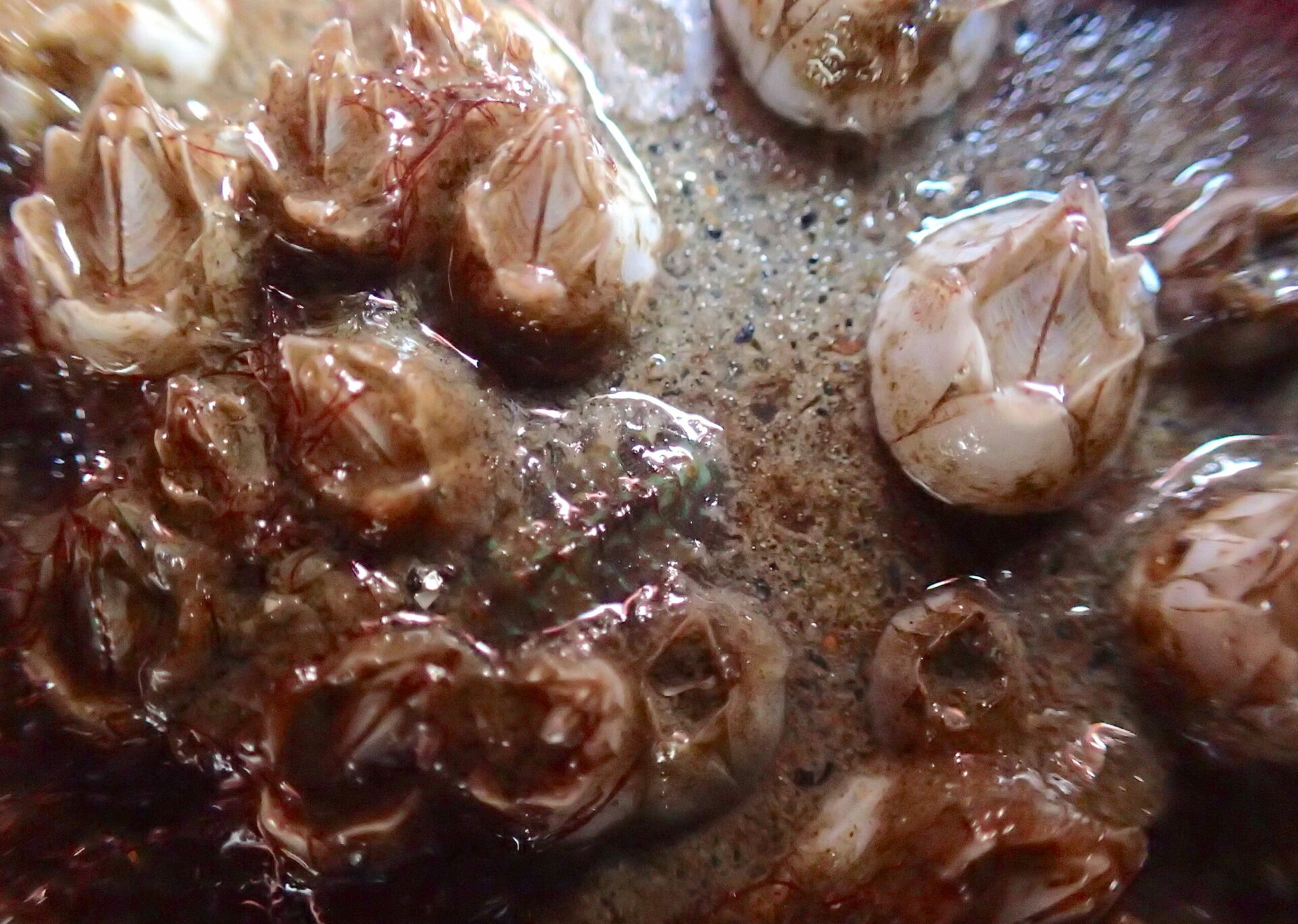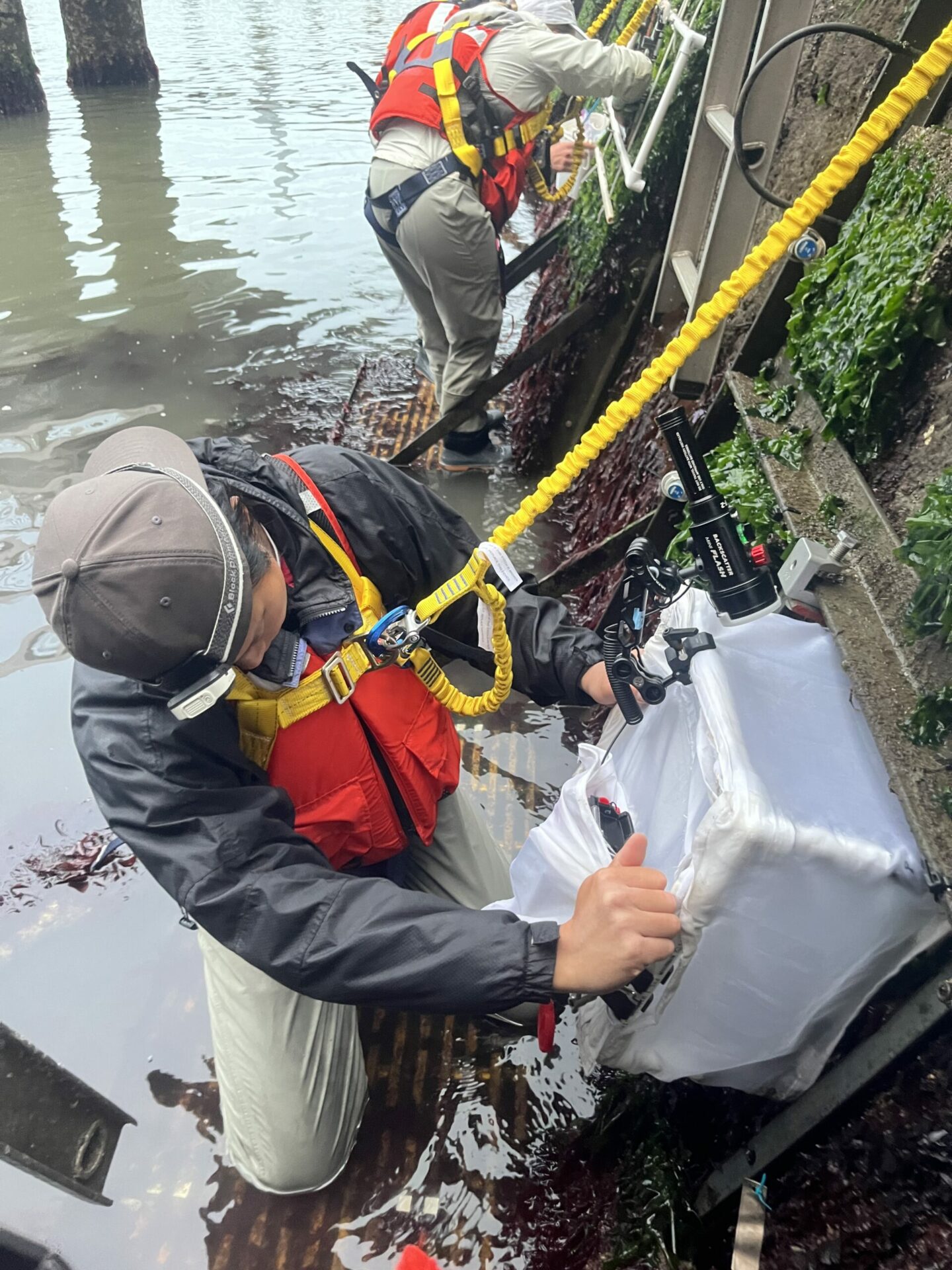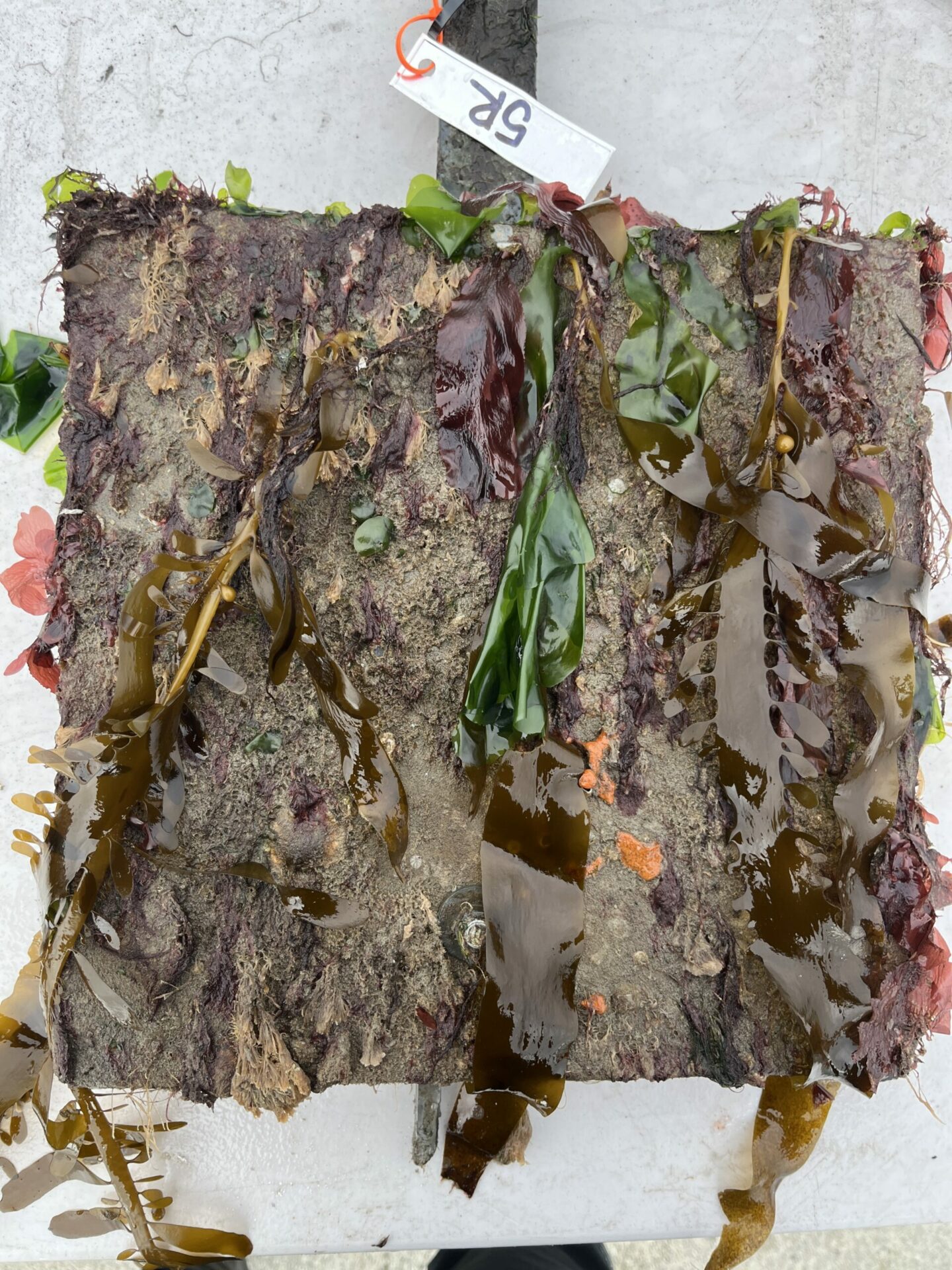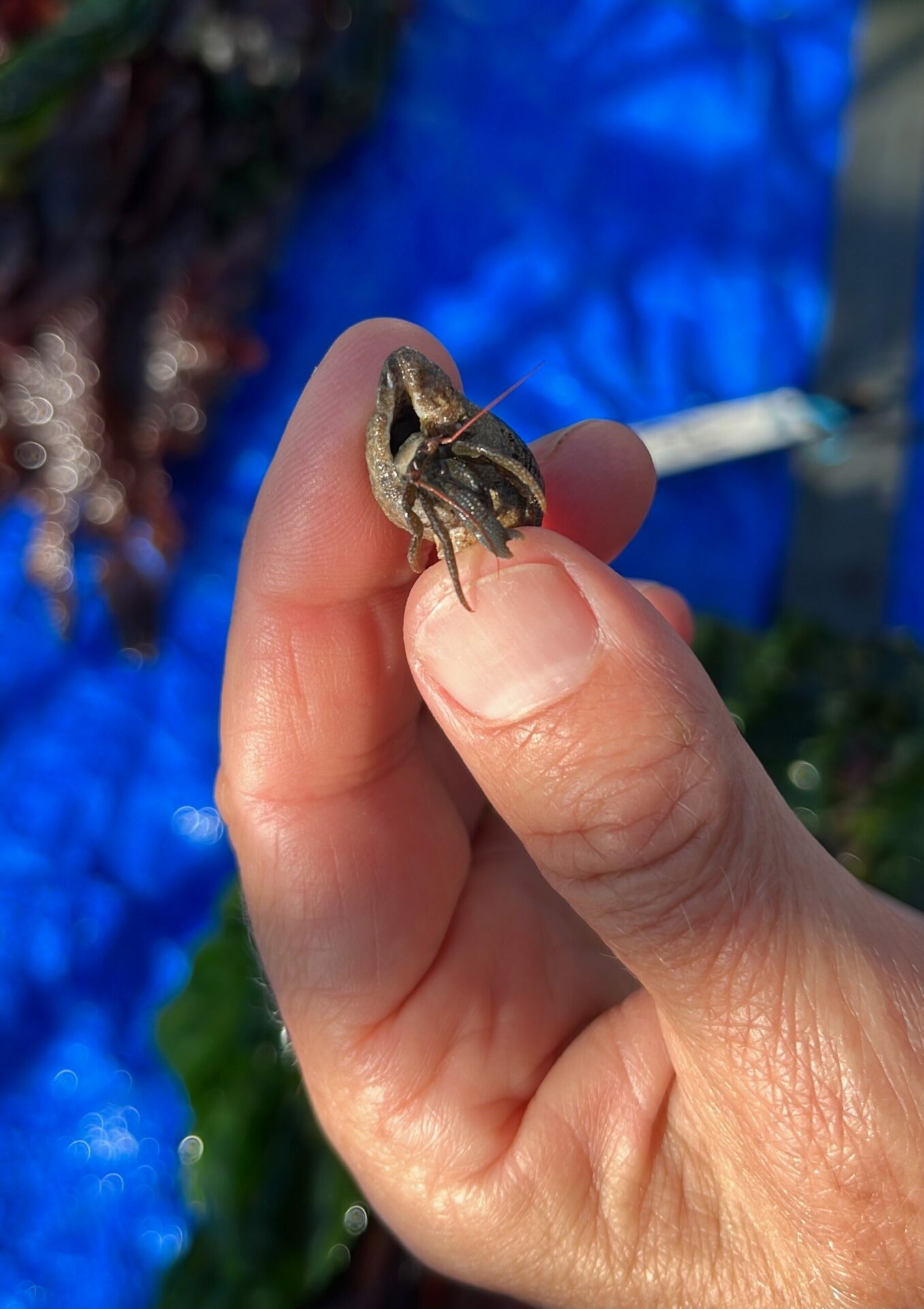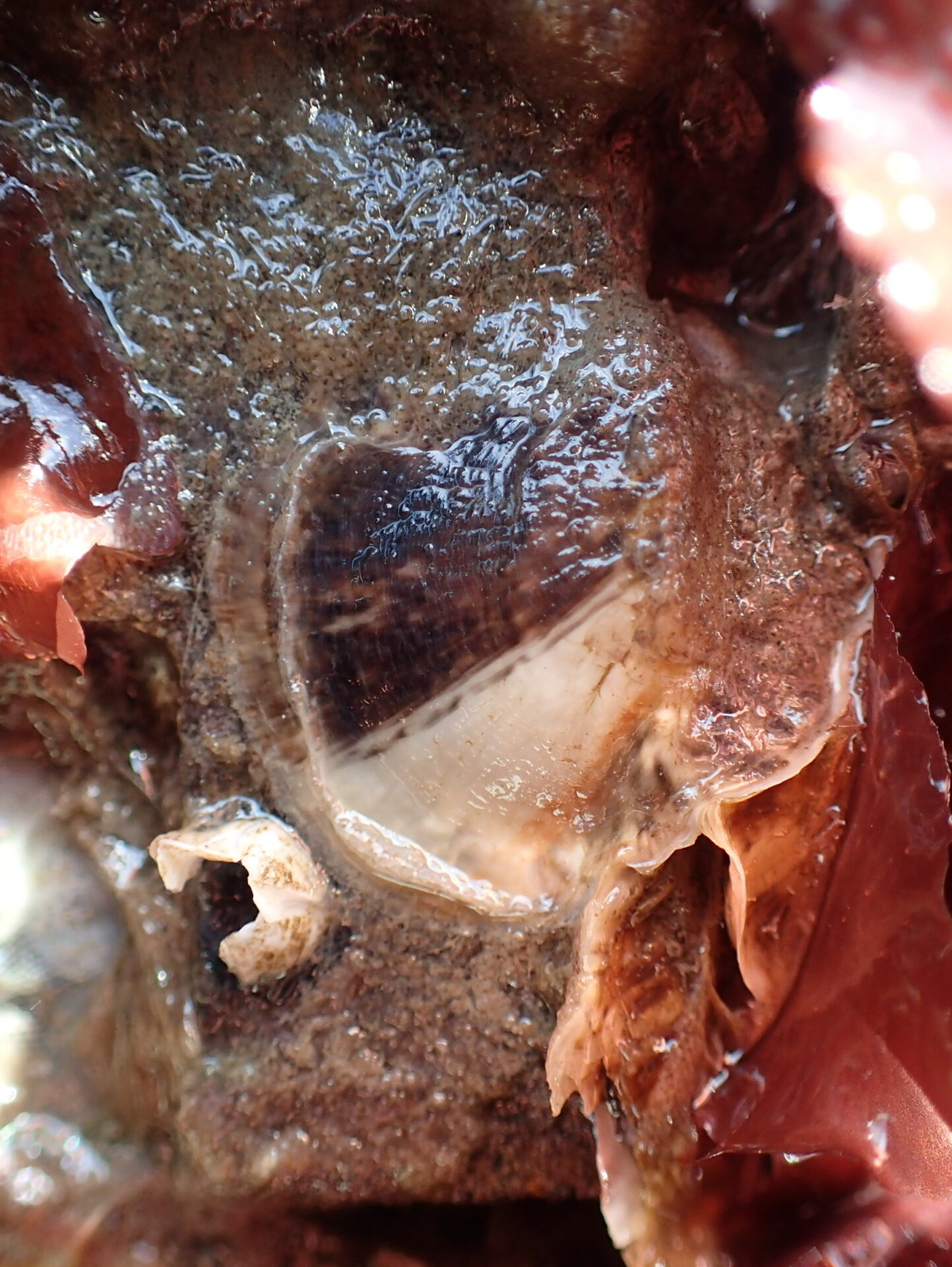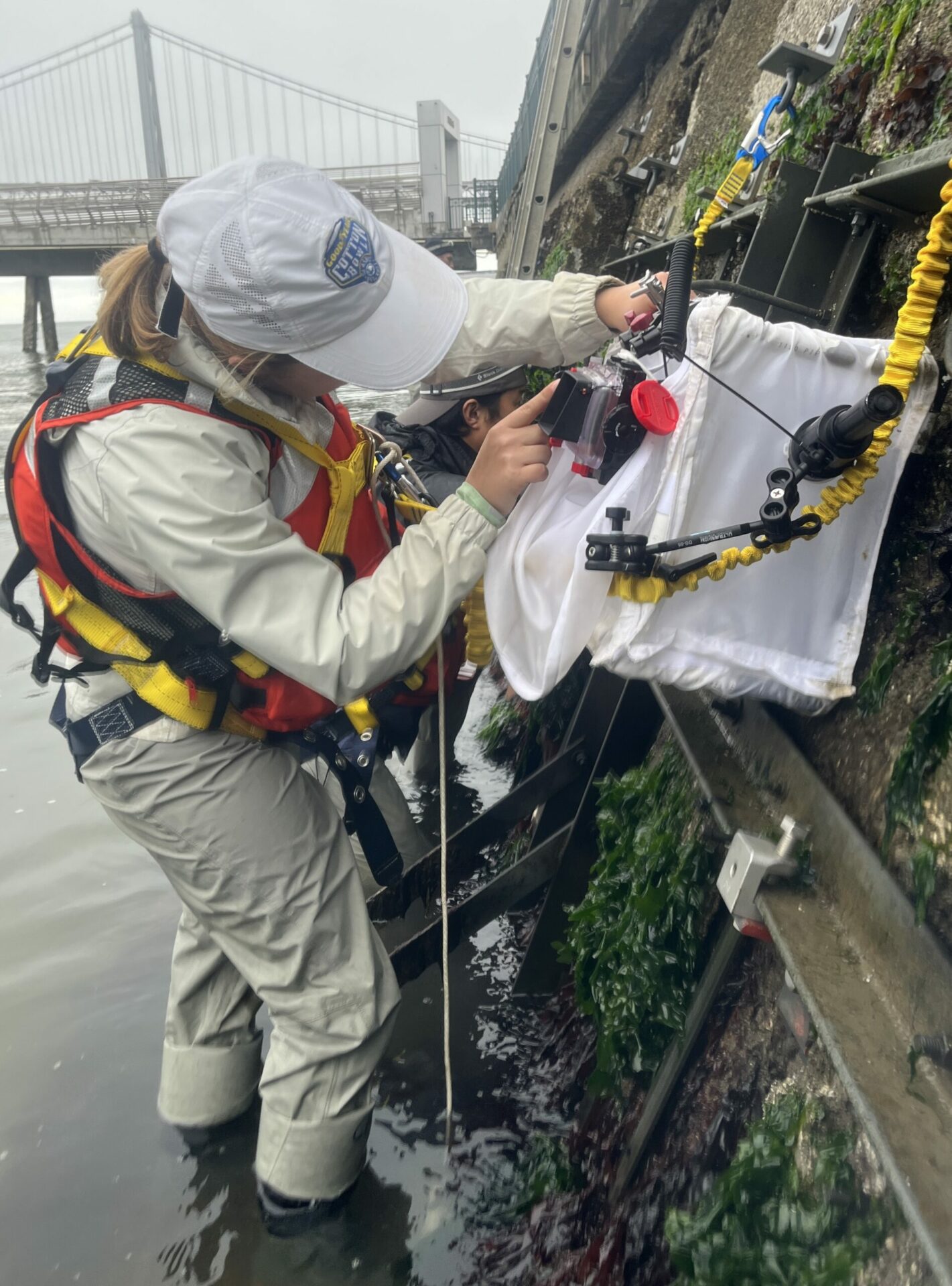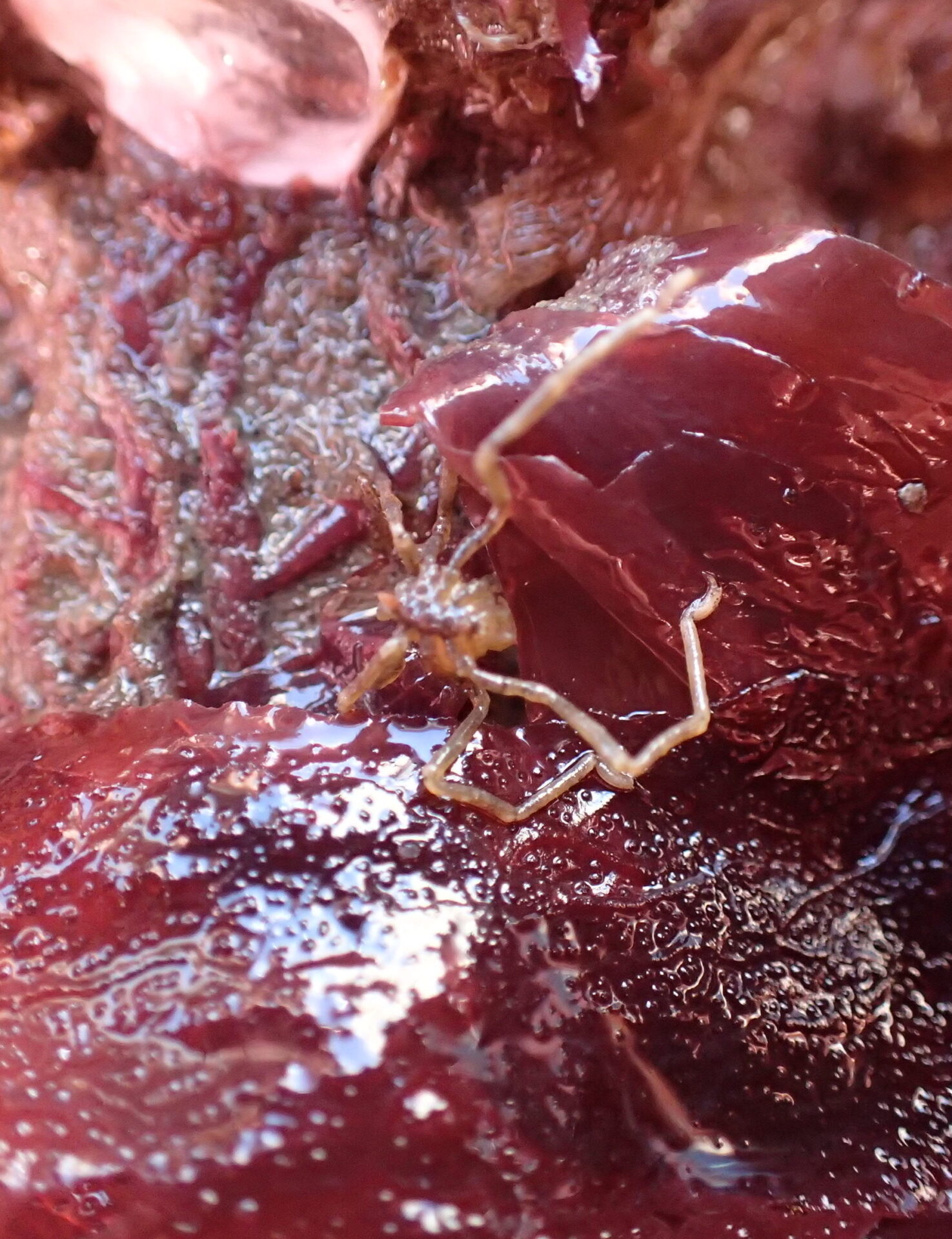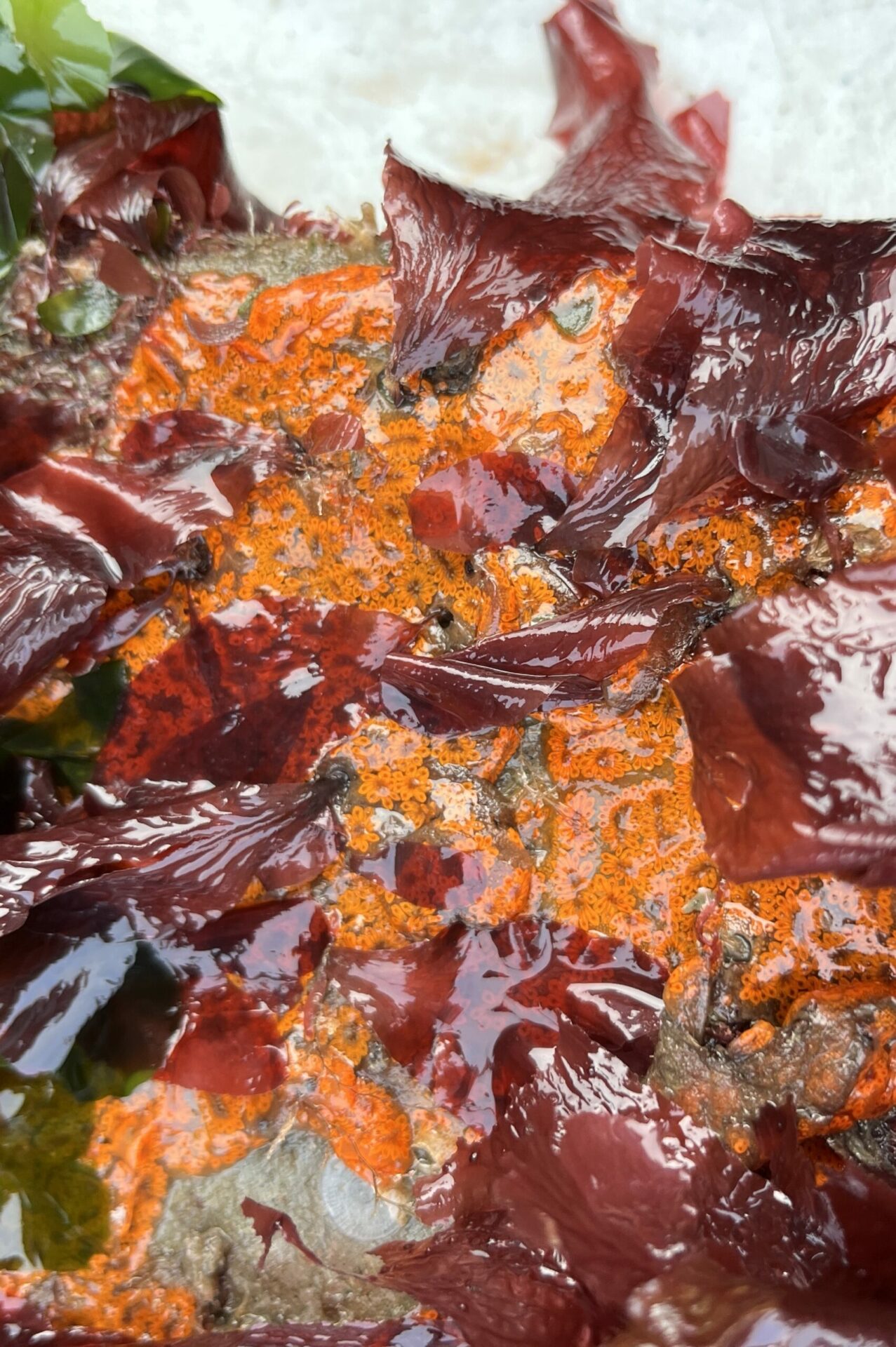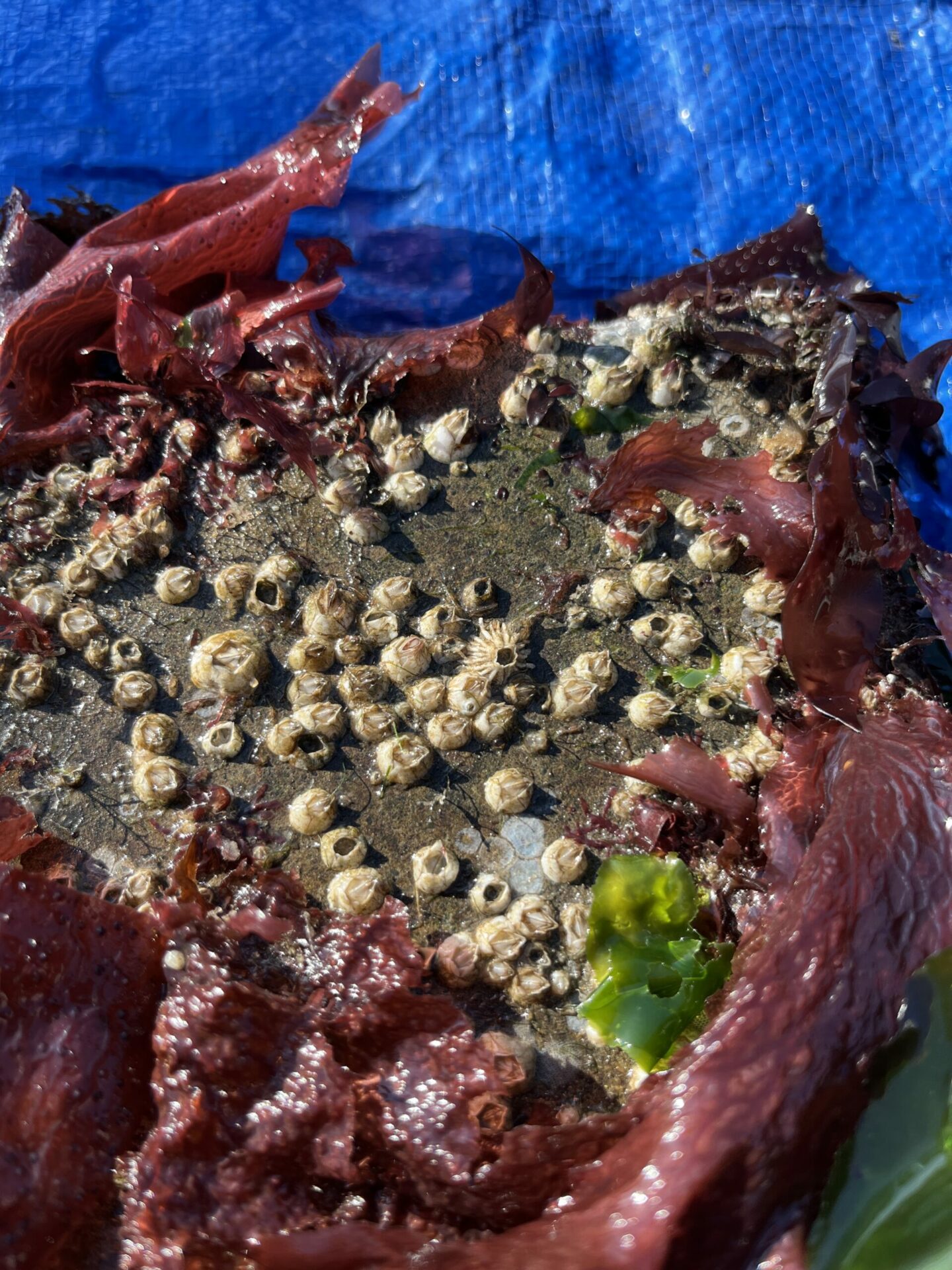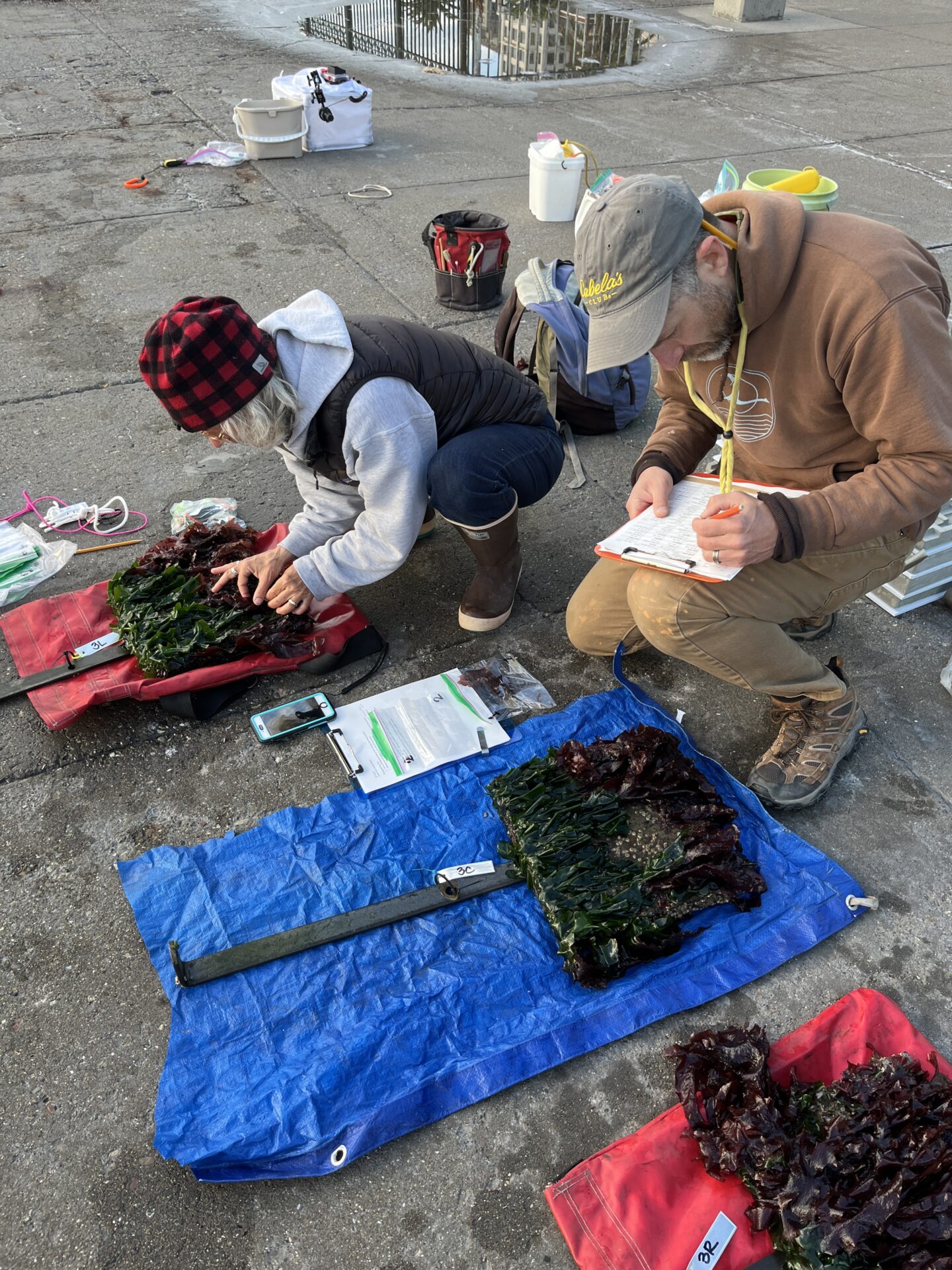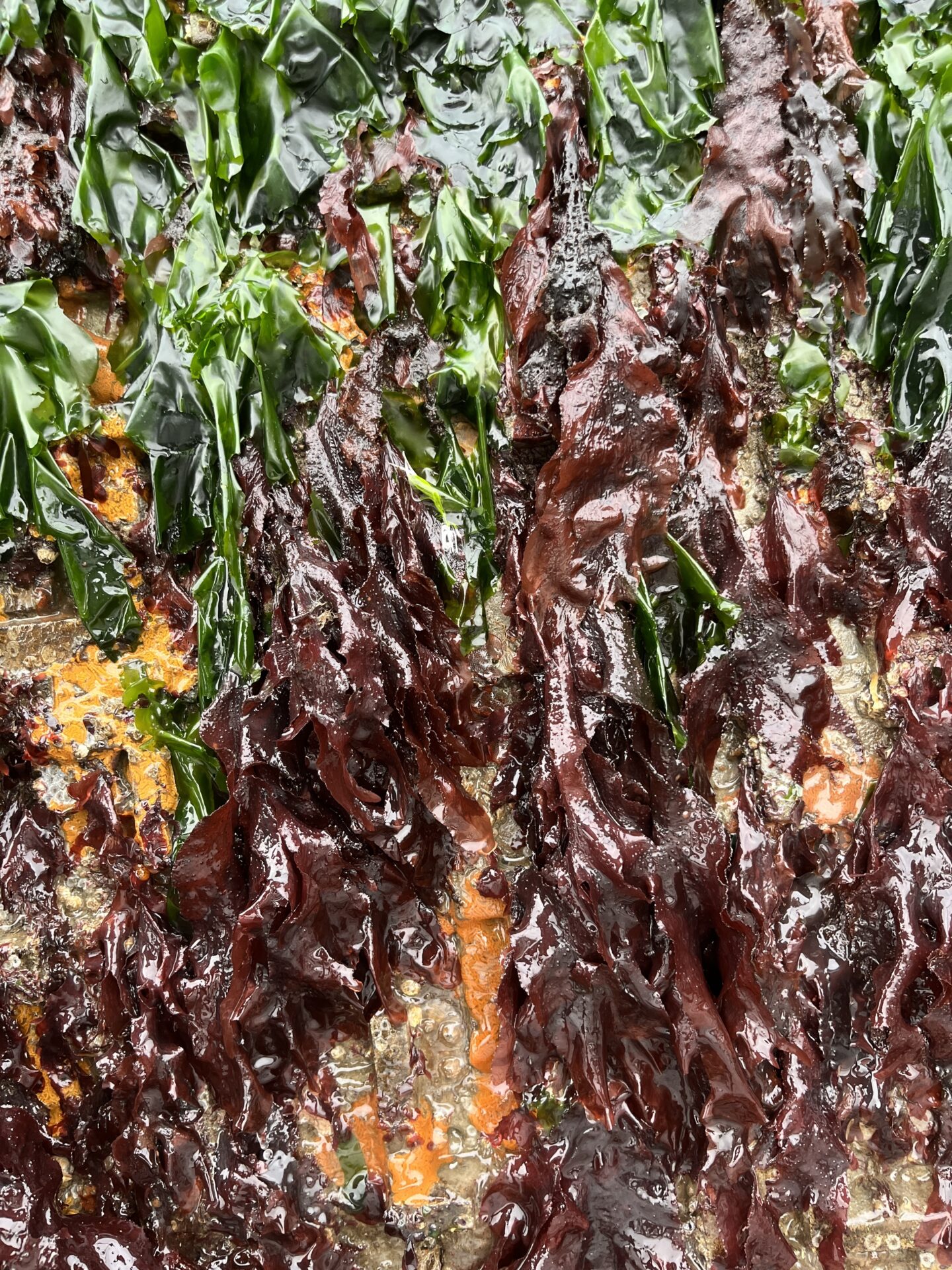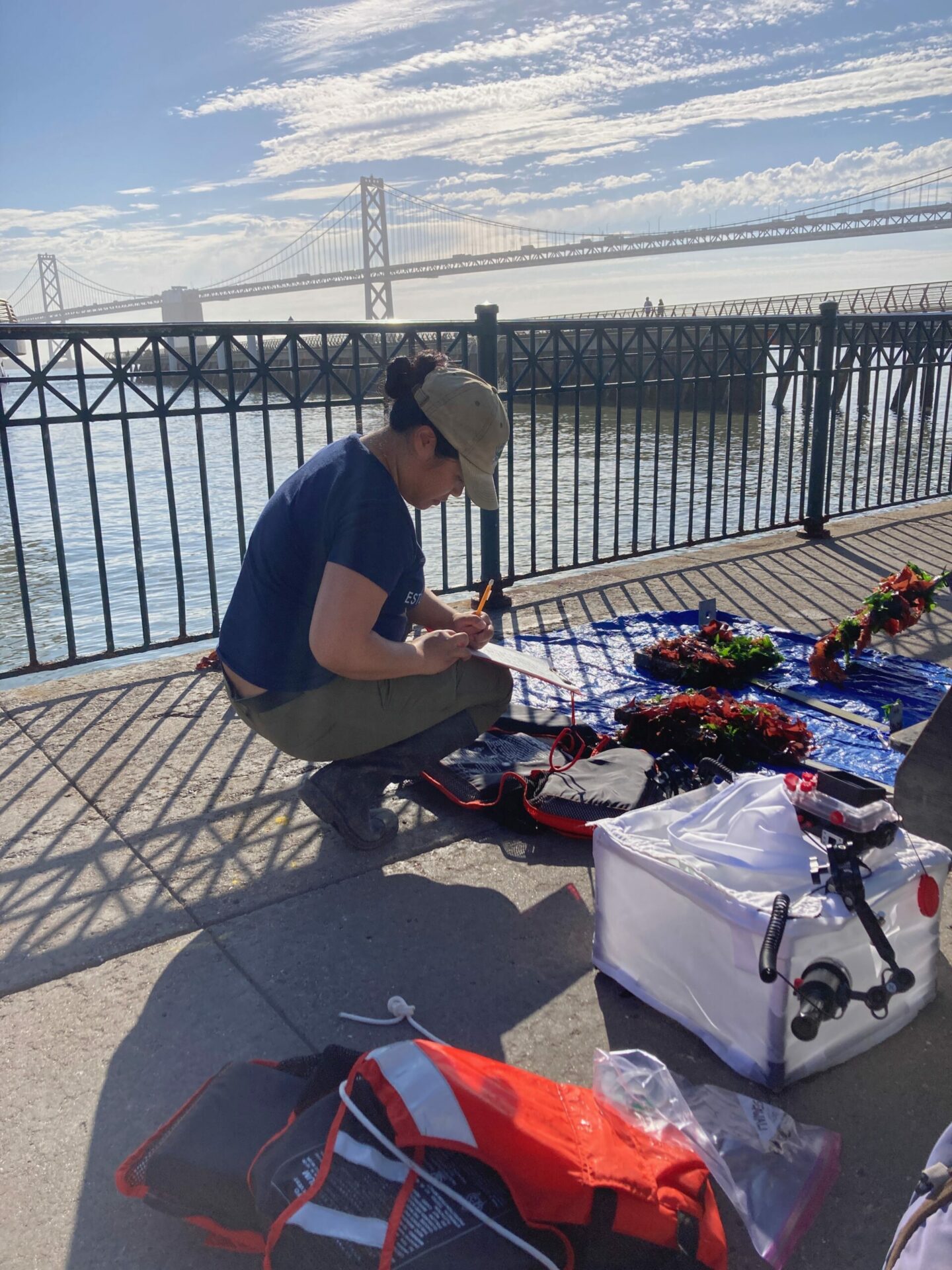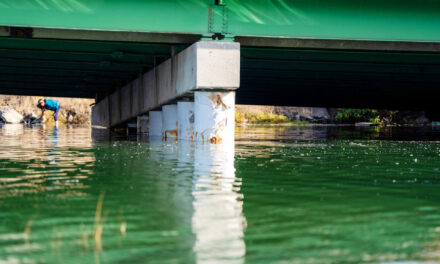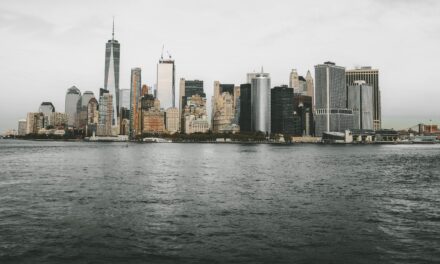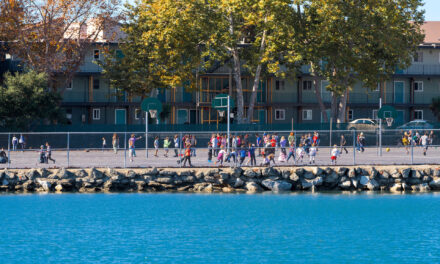Who’s on First at the SF Seawall?
Ecologist Andrew Chang and biological tech Jessika De Jesus sample new seawall tiles this August. Photo: Corryn Knapp, SERC/SFSU.
Ten months after the Port of San Francisco lowered 288 experimental tiles into the water, these bio-friendly seawall surfaces are already crawling with crabs and covered in kelp. This August, researchers are finally getting a good look at all the tile types in their experiment, which range from large to small, and from bumpy to smooth, and which were hung from the waterfront at three different locations and tidal elevations in October 2022.
“We saw a ton of native species and a few non-native ones,” says ecologist Andrew Chang with the Smithsonian Environmental Research Center, launching into a list including chitons, limpets, native oysters, Mastocarpus and Laminaria (red and brown algae ), hermit crabs … “We saw mobile critters settling on the tiles and making a home for themselves or migrating from the adjoining seawall, where there’s a more mature community.”
Scientist Chela Zabin and tech Jessika De Jesus scrutinize lower elevation tiles pulled up by port divers at South Beach Harbor marina site, before returning them to the water. Photo: Corryn Knapp, SERC/SFSU.
As reported in KneeDeep’s October 2022 story about the experiment, scientists and the port hope to ensure that the massive seawall rebuild required to adapt to rising sea levels along the San Francisco waterfront includes some habitats friendly to native intertidal and subtidal species. The experiment called for a two-year monitoring period, during which the science team would pay regular visits to the three sites so they could photograph and ID species on the tiles. Access to the tiles in the deepest water was to be provided by moveable frames, platforms and other installation innovations created by Port staff.
But this past March, during a brief lull in the wave-lashing from winter storms, port divers and the science team discovered quite a bit of damage to frames and some broken or missing tiles. Then the severe weather returned. “We couldn’t get anywhere near a complete check-in done, it wasn’t safe enough to get more than the barest of impressions,” says Chang.
This August’s push is more promising already. Though the frames and platforms were still unsafe at the South Beach Marina site, the team was able to view most of the tiles at the Agricultural Building (near the Ferry terminal) and Pier 45. “This site is much closer to the Golden Gate, so we saw more open-coast species like feather boa kelp that thrive in wave-exposed environments,” says Chang.
Native chitons and barnacles found at the Agricultural Building site at low tide. Photo: Chela Zabin, SERC.
Since the monitoring work is ongoing, such observations are just preliminary. But Chang was clearly excited to be putting on his drysuit, clipping into a harness, and hanging off a pier with a camera lightbox in one hand and a clipboard in the other to start filling in his data sheets. “After all the time spent working with a large group of people to design this experiment, and time talking about all the stuff that needed to happen to put it all in place, it’s great to get a good look at the tiles in action,” says Chang.
More definitive results should be ready by the end of the year. But one important take home, as Chang’s co-lead for the project Chela Zabin put it, was evident: “At first glance natives dominated.”
Other Recent Posts
Learning the Art of Burning to Prevent Wildfire
In Santa Rosa’s Pepperwood Preserve, volunteers are learning how controlled fires can clear out natural wildfire fuel before it can spark.
Martinez Residents Want More Than Apologies — They Want Protection
After a 2022 release of toxic dust and a February 2025 fire, people in the northeast Bay town are tired of waiting for safety improvements.
Weaving Fire Protection Out Of What’s Already There
A new Greenbelt Alliance report shows how existing vineyards, grasslands, and managed forests can slow wildfire and save vulnerable homes.
Fall Plantings Build Pollinator Habitats in Concord
Community groups, climate advocates and a church are coming together to plant pollinator gardens as monarchs, bees see population declines.
Newark Needs Housing, But Could Shoreline Serve A Higher Purpose?
The Bay Area needs more affordable housing, but would 196-homes or a buffer against sea level serve local needs better in the years ahead?
Who Will Inherit the Estuary? Training for a Rough Future
The six-month program teaches students aged 17 -24 about the challenges facing communities around the SF Estuary, from Stockton to East Palo Alto.
Split Verdict Over State of the Estuary
Habitat restoration and pollution regulations are holding the Bay steady, but the Delta is losing some of its ecological diversity, says SF Estuary Partnership scorecard.
Volunteers Catch and Release Tiny Owls For Science
In Santa Rosa, citizen scientists capture northern saw-whet owls to help further research on climate impacts to the bird.
Antioch Desalination Plant Could Boost Local Water Supply
The $120 million plant opened this fall and treats 8 million gallons of brackish water a day, 75% of which is drinkable.
How Cities Can Make AI Infrastructure Green
Data centers fueling AI can suck up massive amounts of energy, water and land, but local policies can mitigate the impact.







